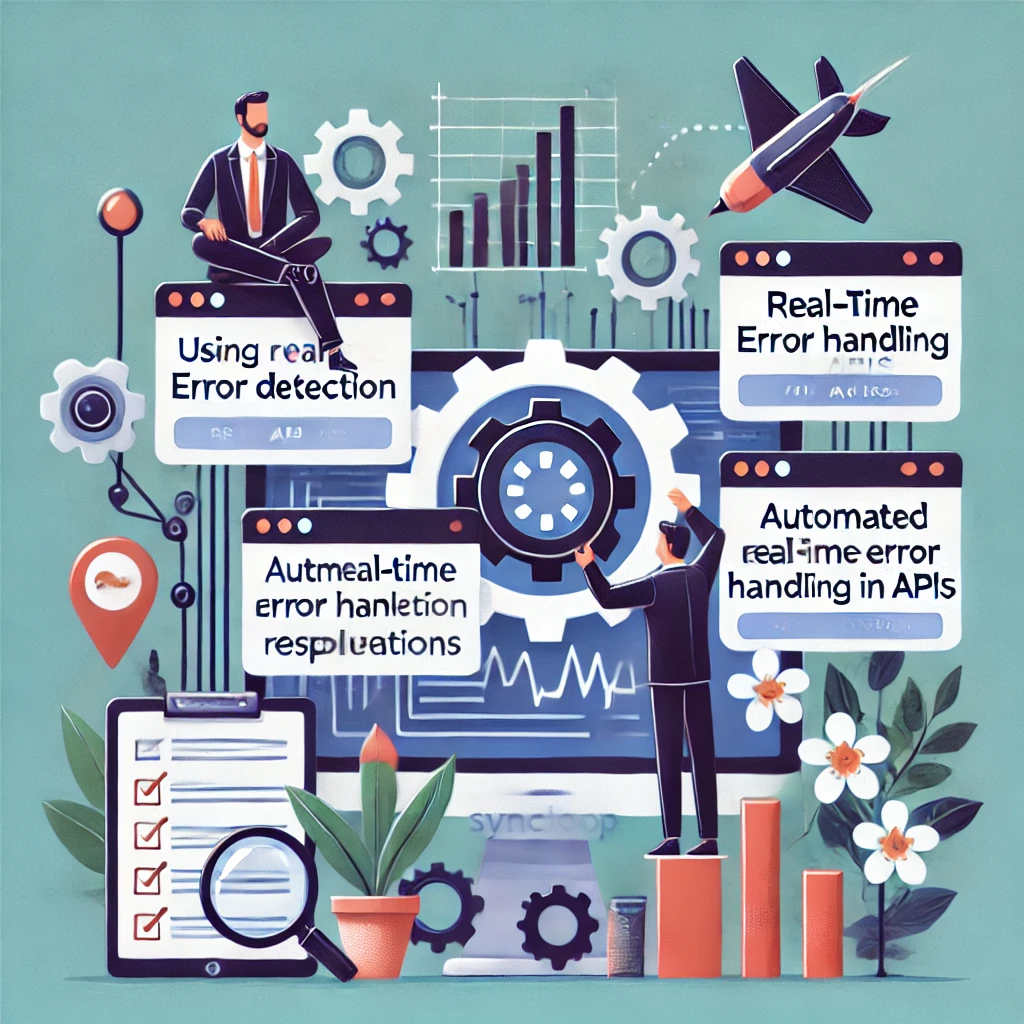Using Syncloop to Automate Real-Time Error Handling in APIs

Syncloop provides advanced tools for automating error handling in APIs, enabling developers to build resilient systems that maintain performance and reliability. This blog explores how Syncloop supports real-time error management and shares best practices for implementing automated error handling workflows.
Importance of Real-Time Error Handling in APIs
Automated error handling is vital for:
- Minimizing Downtime: Resolving issues quickly to maintain service availability.
- Improving User Experience: Providing meaningful feedback to users and preventing interruptions.
- Ensuring Data Integrity: Handling failures gracefully to prevent data loss or corruption.
- Streamlining Debugging: Reducing the time and effort required to identify and fix issues.
- Scaling Operations: Managing errors efficiently in high-traffic environments.
Challenges in Error Handling for APIs
- Diverse Error Types APIs encounter various errors, including validation failures, timeouts, and dependency issues.
- High Traffic Identifying and resolving errors in real time becomes complex as API usage scales.
- Error Propagation Failures in one API can cascade through dependent systems, magnifying their impact.
- Monitoring Limitations Lack of visibility into error patterns can delay resolution.
- Manual Interventions Relying on manual processes increases downtime and operational overhead.
How Syncloop Simplifies Real-Time Error Handling
Syncloop provides a range of tools and features to automate error handling effectively:
- Real-Time Monitoring Track API traffic and error rates with live dashboards to detect issues as they occur.
- Dynamic Error Categorization Automatically classify errors based on type, severity, and source for prioritized resolution.
- Retry and Fallback Mechanisms Configure automated retries and fallback workflows for transient failures.
- Workflow Automation Design custom error-handling workflows using Syncloop’s visual tools.
- Detailed Logging and Alerts Capture comprehensive logs and set up alerts for critical errors.
- Analytics and Reporting Gain insights into error trends and root causes with analytics tools.
Steps to Automate Real-Time Error Handling with Syncloop
Step 1: Monitor API Traffic
Enable Syncloop’s monitoring tools to track API requests and detect anomalies. Focus on:
- Error rates by endpoint.
- Latency and response times.
- Dependency failures.
Step 2: Categorize Errors
Use Syncloop to classify errors into categories such as:
- Validation errors (e.g., missing fields or invalid formats).
- Network errors (e.g., timeouts or unreachable services).
- Authentication errors (e.g., invalid tokens or unauthorized access).
Step 3: Configure Automated Workflows
Leverage Syncloop’s automation tools to create error-handling workflows. Examples include:
- Retrying failed requests with exponential backoff.
- Redirecting traffic to alternate endpoints during service outages.
- Triggering notifications for critical issues.
Step 4: Set Up Alerts
Define custom alerts for high-severity errors. Configure Syncloop to:
- Send real-time notifications to development and support teams.
- Automatically escalate unresolved issues.
Step 5: Implement Logging and Analytics
Enable Syncloop’s logging features to capture detailed error data. Analyze logs to:
- Identify recurring issues.
- Pinpoint root causes of errors.
- Optimize API performance and reliability.
Step 6: Test and Validate
Simulate error scenarios using Syncloop’s testing tools. Validate:
- Workflow accuracy for different error types.
- Performance under high error rates.
- Effectiveness of retries and fallbacks.
Best Practices for Real-Time Error Handling
- Adopt Proactive Monitoring Use real-time dashboards to detect and address issues before they impact users.
- Implement Graceful Degradation Ensure APIs provide partial or alternative responses during failures.
- Use Retry Logic Sparingly Avoid overwhelming systems with retries; implement exponential backoff strategies.
- Prioritize Critical Errors Focus on resolving high-severity issues to minimize downtime and disruptions.
- Document Error Scenarios Maintain detailed documentation of potential error types and resolution workflows.
Example Use Case: E-Commerce Platform
An e-commerce platform uses Syncloop to automate error handling for its APIs:
- Monitoring: Track order processing and payment gateway errors in real time.
- Error Categorization: Classify issues like payment failures, stock shortages, and delivery API outages.
- Automated Workflows: Retry failed payment requests and trigger fallback inventory checks.
- Alerts: Notify support teams of critical errors, such as payment gateway outages.
- Analytics: Analyze error trends to optimize workflows and reduce failure rates.
Benefits of Using Syncloop for Error Handling
- Faster Resolution: Automate repetitive tasks and reduce time to resolve issues.
- Enhanced Reliability: Minimize downtime with robust retry and fallback mechanisms.
- Improved Insights: Gain actionable data to prevent recurring errors.
- Scalable Solutions: Handle growing traffic and error volumes effortlessly.
- Proactive Management: Detect and address issues before they affect users.
The Future of Error Handling in APIs
As APIs grow in complexity and scale, automated error handling will become increasingly important. Syncloop equips developers with the tools to build resilient systems that maintain performance and reliability, ensuring seamless operations in any environment.
Image Description
A conceptual graphic illustrating automated real-time error handling in APIs using Syncloop. The image highlights monitoring dashboards, retry workflows, and analytics tools ensuring robust API performance.
Back to Blogs